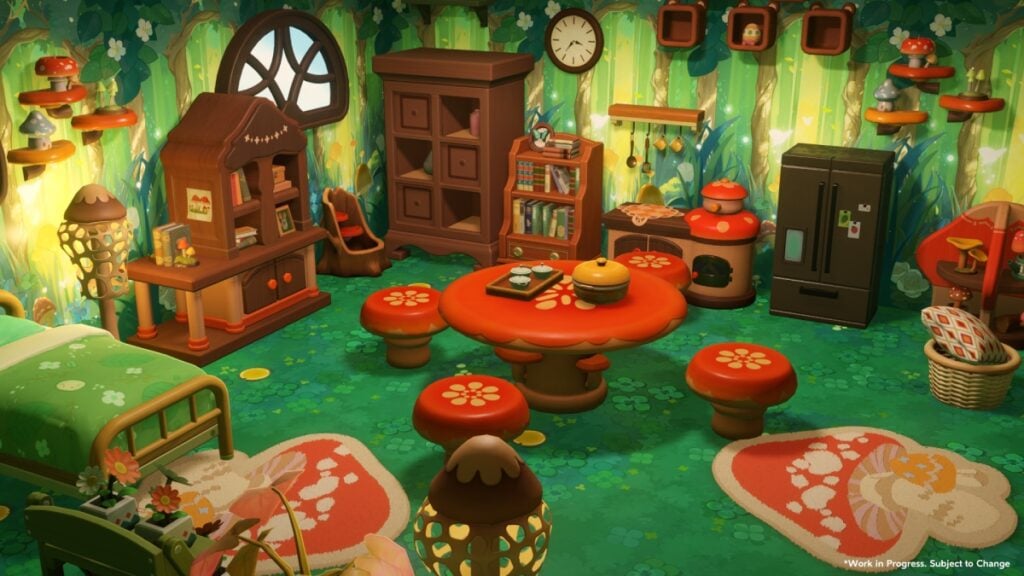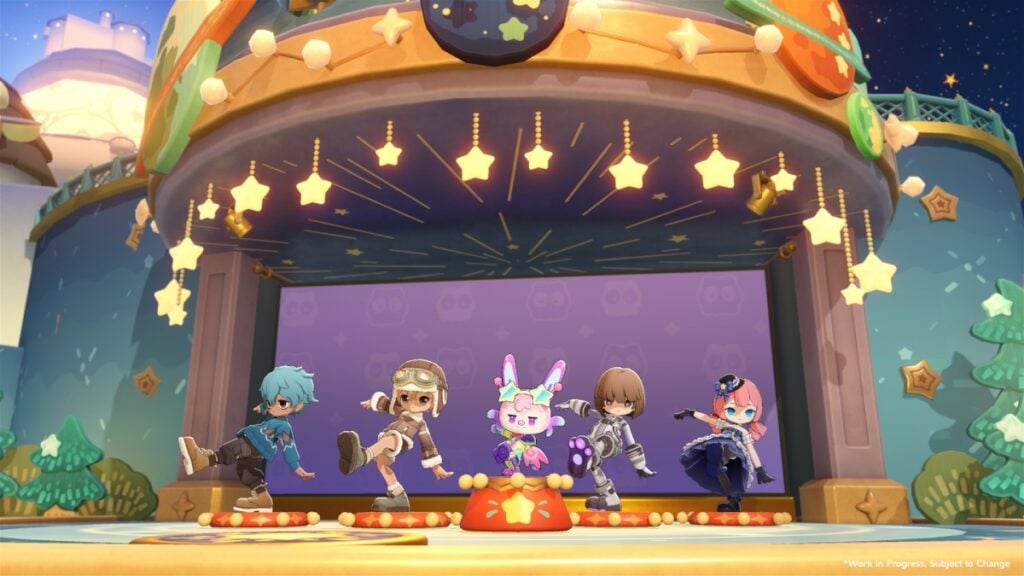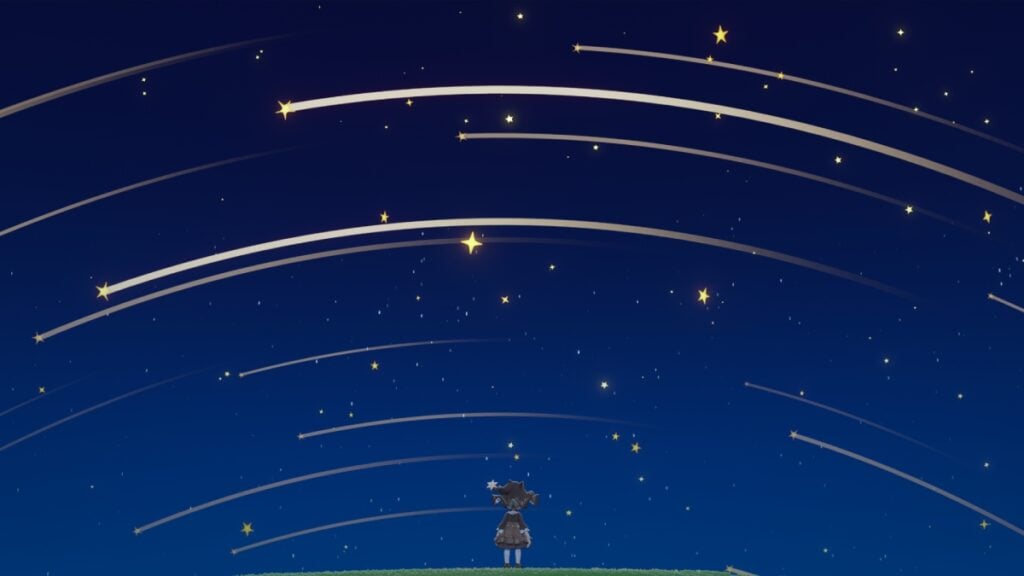Skip To...
HoYoverse is pretty well known for its action-heavy approach across most of its titles. I’ve grown used to its action-focused experiences, but when the studio announced Petit Planet, I was shocked in a good way. How would it handle a brand-new cosmic life sim, and what different things would it bring to the table? Well, after inviting a few neighbors, taking several Starsea Voyages, and spending an unhealthy amount of time decorating my home, I can confidently say that Petit Planet is one of the best life sims I’ve experienced.
Welcome to Your New Planet

I was fortunate enough to try Petit Planet before the closed beta test. With that in mind, many of the things I’ll mention here are subject to change.
As soon as I fired up Petit Planet, I got the option to create my character and choose between two planets: one with vast green grasslands and another with rocky terrain and more desert-like flora. I went with the former because I’m a sucker for that color palette, named it Outer Sky (as I always name my islands and towns), and started my voyage alongside some of the cutest companions I’ve seen in a HoYoverse game yet.
After a couple of minutes on my newly discovered planet, I quickly felt at home. Many of the mechanics were familiar to those I’ve experienced in recent life sims. Bug-catching, fishing, gathering wood and minerals, and so on. Still, Petit Planet felt like its own thing rather than chasing the trends the genre tends to follow, which, for better or worse, usually leads to some quick staleness.
One of the most alluring aspects of Petit Planet lies in its progression systems and in how it does more than build a new store the next day. At the center of your planet, you have a Luca Arbor Tree. You can water it with a substance called Luca to make it grow, but most importantly, unlock new gameplay features for your planet. For example, at level 1, you get your beach area, but at level 4, a new mountain region unlocks. I preferred this approach, as other life sims already show you a glimpse of the new areas behind a bridge under construction, but here it is all a surprise as you keep nurturing your planet every day.
Speaking of things you do every day, Petit Planet runs on a real-time cycle, meaning that there’s a way to go all “meta” and have your planet at the highest ranking or with all biomes in a day. It is a game that’s all about enjoying the ride. Yet, it doesn’t repeat the mistake that many other life sims have, where it puts you behind these daily walls that are impossible to climb.
For starters, there are many objectives you can tackle, some that will provide you with Luca for your tree, and others that will let you increase your bonds with neighbors, build a new store, and so on. But if you finish all of those, there are still many things to do. For example, there are these fluffy entities called Archiboos. They appear after you perform some activities, such as harvesting crops, fishing, or catching bugs. You’ll need them to level up a neighbor’s Planette, which is their small planet of sorts that gives you different rewards with each rank you unlock. If you want to, you could spend your whole day catching bugs to get the necessary Archboos for your neighbors.
There are also several achievements, or Footprints as the game calls them. They reward you with Loomi, a currency you can use to buy furniture or cosmetics that rotate daily, and even get some cool hairstyles for your character. Again, Petit Planet has this cozy vibe that encourages you to take the game slowly. However, it also has several gameplay options for those who don’t mind going the extra mile to get the best rewards or nurture their planet to the highest level.
And of course, there’s the Galactic Bazaar, which was a bit empty for this test, but that was expected. In this multiplayer hub, you’ll encounter several activities, like a raffle of sorts or one of the most fun rhythm games I’ve played in a life sim. I can already imagine how packed it will be at launch with other players, but even with a few players, there are several things you can do there.
For Decorators and Fashion Enthusiasts

An essential part of any life sim lies also in its decoration and fashion aspect, and Petit Planet shines here. Since this was a closed beta test, I got dozens of free furniture to use in my home and around my planet. Decorating is as easy as it gets, with easy-to-grasp controls that make even putting lights in your house a breeze, not something frustrating like in other games.
I was surprised to see just how neatly organized all the furniture was, as there’s a compendium of sorts that organizes everything into furniture sets, making it easy to find, especially if you want to see how many items belong to a specific style. There’s also the good-old DIY crafting mechanic that lets you create furniture with materials you find around your planet. While I didn’t dive too deeply into this system, I was glad to see that each object you make appears in your journal, and the game actually tells you where to get the materials, making the process of building something much easier.
Beyond furniture, I ended up liking fashion more than I thought I would. At first, it was strange to see HoYoverse moving away from its iconic anime-like style. However, it took just a couple of minutes for me to fall in love with the customization options and the gorgeous characters in the game, or at least the ones available during the test.
In terms of clothes, there was plenty to choose from, and many matching outfits that fit different styles. You have some casual racer-like looking suits, and even some dinosaur onesies, which are extremely cute. And yes, you can also suggest some outfits to your neighbors, so if you want all of them to wear a specific dress, you can do that after reaching some bond levels.
But the cherry on top of all of these things, and one I can’t believe excited me as much as it did, was the fact that bridges and stairs don’t take a whole day to build. That’s right: once you have the bridge or stairs in your inventory, you can open your exterior decorator app and place them wherever you want. Also, there are no fees involved in any of these things, and yes, that includes your house. It is loan-free for the first time in the history of life and farming sims.
Across the Starsea

Another key aspect of Petit Planet is its Starsea Voyages. After a couple of quests, you’ll get your own interstellar vehicle, which you can customize and use to drive across the Starsea. Here, you get to go to different Islets that have new materials, some Lucadrops that you need to upgrade your vehicle, and if you’re lucky, some potential new neighbors.
The Islets are a vital part of the gameplay, as there are several quests that require some materials that might not be native to your planet. For example, to get my store running, I had to get some Quartz. Since I ran out of nodes during the day, I did a few Voyages and found Quartz across these Islets. I also found a couple of new neighbors and invited them to my planet.
Still, this doesn’t come for free, as each Voyage requires a Lumia Battery. One battery will let you reach at least two Islets at first, but with upgrades, you can visit around three or four during a Voyage. There are also different ways to get these batteries, such as ranking up a neighbor’s Planette or buying them with Loomi, albeit from a limited daily stock that refills each day.
This is yet another example of how Petit Planet aims to be a cozy cosmic life sim, catering to those who love relaxed gameplay they can enjoy in small bits, as well as those who love diving in fully to do as many things as possible in one day.
A Spectacular Cosmic Life Sim

As someone who’s followed almost every HoYoverse game to date, Petit Planet is another one I will add to my daily play schedule. This life sim perfectly combines the genre’s staples while adding plenty of new features to make it feel unique. Yet, the fascinating part is that we might finally have in our hands a truly “live” life sim. If Petit Planet ends up being like any other HoYoverse game, we’re about to have a life sim that will stand the test of time, where we won’t have to say goodbye to our neighbors and planets once we reach an endpoint, and that sounds promising.









